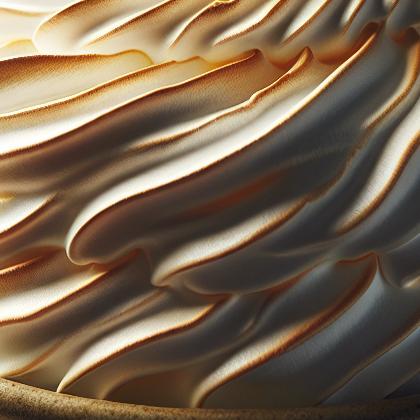Meringue

Meringue, is a type of dessert, often associated with French, Swiss, and Italian cuisine, made from whipped egg whites (or aquafaba) and sugar, and occasionally an acid such as lemon, vinegar or cream of tartar. A binding agent such as salt, cornstarch or gelatin may also be added to the eggs. The addition of powdered sugar, which usually contains corn starch, to the uncooked meringue produces a pavlova, a national dish of Australia and New Zealand. The key to the formation of a good meringue is the formation of stiff peaks by denaturing the protein ovalbumin (a protein in the egg whites) via mechanical shear. Meringues are often flavoured with vanilla, a small amount of almond, or coconut, although if extracts of these are used and are based on an oil infusion, an excess of fat from the oil may inhibit the egg whites from forming a foam
Meringue Properties:
| Food Property | Type | Description |
|---|---|---|
| Flavor Profile | Sweet | Meringue has a dominant sweet flavor due to the high sugar content. |
| Nutritional Value | Macronutrients | Meringue is low in macronutrients such as fat and protein but high in carbohydrates from sugar. |
| Micronutrients | Meringue does not have significant micronutrient content. | |
| Color | Maillard Reaction | Meringue can develop a light brown color on the surface due to the Maillard reaction when baked at high temperatures. |
| Aroma | Volatile Compounds | Meringue does not have a prominent aroma but may have a slight eggy smell from the use of egg whites. |
| Cooking Behavior | Heat Conductivity | Meringue requires slow and steady heat to evenly cook the egg whites and achieve the desired texture. |
Food Pairing App - Version 1.2.0
